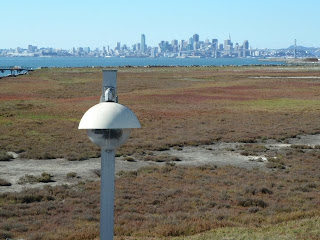You don't hear much about coppicing and pollarding in America. And right now, as I'm typing this, the editor is putting red squiggly lines under both of the words because they aren't in the editor's dictionary. So, in case you haven't figured out what coppicing and pollarding are, let me tell you. Coppicing is the practice of sawing off a young tree at ground level. All the roots of the tree are intact so next year, it puts out several shoots from the stump you have left behind, and in a few years, how many, depends on how big a piece of wood you need, you have several straight pieces of wood suitable for things like fence posts, hurdles and other application.
Pollarding is similar to coppicing, except you prune all the branches off an older tree and just leave stumps. Next year, the stumps put out new branches, each one a straight shoot especially suited for things like basked weaving.
I really don't know why coppicing and pollarding isn't practiced much in America, but I know that it is in England.
The reason it is practiced there, I am theorizing, it twofold. One is that coppicing and pollarding works best with certain species of trees which seem to like the British climate. The second reason is that Britain has been densely populated for a long time and so mature logs are not as plentiful as in North America. As a consequence, the British have come up with a way to quickly raise useful wood in less than full tree dimensions.
And as I already alluded, coppicing trees looks like a good way to grow boat parts like ribs or stringers, and for small boats, even gunwales. What appeals to me is the idea of growing boat parts to the proper dimensions so all you have to do is peel and trim which is a very low tech way of processing wood. No running full grown trees through a saw to produce lots of sawdust and a few usable planks. Anyway, I'm looking to do some coppicing provided that I can find some suitable wood species that will grow locally.
Stay tuned.

The west end of Alameda, a former salt marsh topped off with dredged fill, mostly sand. Will anything tree-like grow here? It's raining now & I can probably get some willow shoots going. But no rain from March to November. Who knows what will survive.
5 comments:
Wolfgang, this sounds like a good idea and an interesting experiment. I am familiar with the techniques though I've never done it myself. Keep us posted!
Wolfgang,
My crew and I coppice willows on an island in the Columbia regularly each winter, continuing the tradition of the native peoples here, who likyl coppiced the shrubs there before us (when I first arrived that's what it looked like!) Between the Salish and the beavers, it's a relatively easy task and then the very act of harvesting the shoots results in better shoots for next year.
I like what you're working on here, and I'm 100% down your road (or rather came from that direction into kayak stuff). Keep it up!
Wolfgang,
My crew and I coppice willows on an island in the Columbia regularly each winter, continuing the tradition of the native peoples here, who likyl coppiced the shrubs there before us (when I first arrived that's what it looked like!) Between the Salish and the beavers, it's a relatively easy task and then the very act of harvesting the shoots results in better shoots for next year.
I like what you're working on here, and I'm 100% down your road (or rather came from that direction into kayak stuff). Keep it up!
Oh, yes, the coppicing (pollarding, mostly) is for kayak ribs and willow basketry.
Hi Wolfgang,
Paulownia trees are cultivated for timber by coppicing: once they've established a root system they'll send up shoots 3-4m tall (er, 10-15ft) in a single season. It's supposed to be one of the lightest useable timbers, lighter than cedar but harder than balsa. I almost tried to track down paulownia to try for my latest kayak, but decided it was easier to buy cedar off the shelf.
Post a Comment